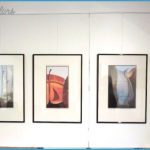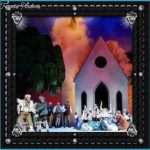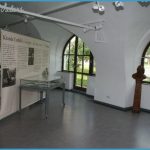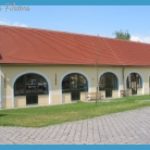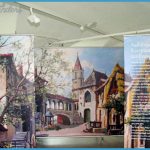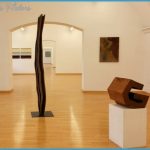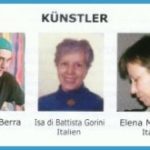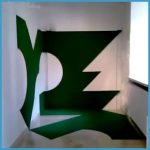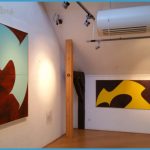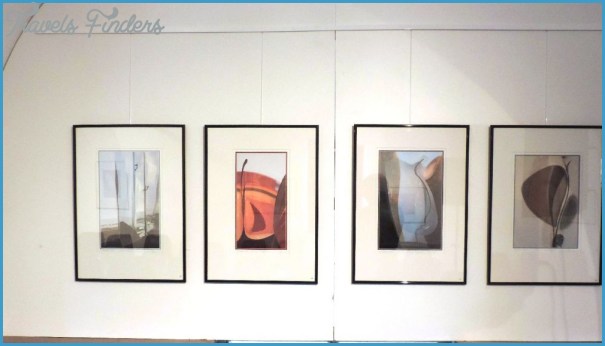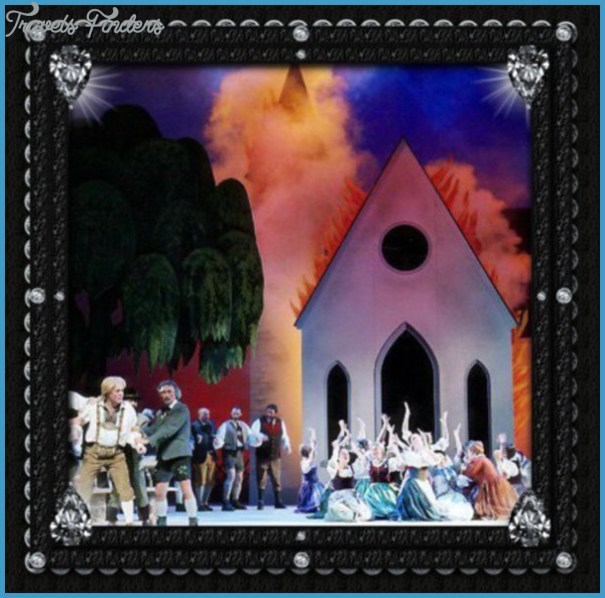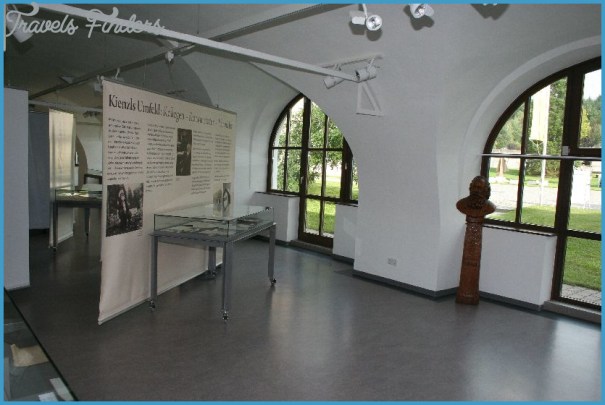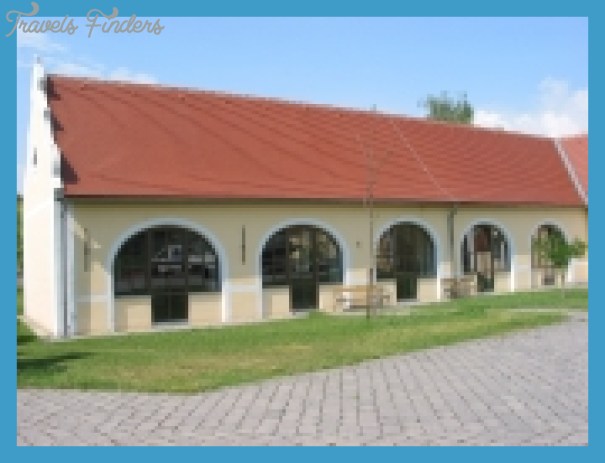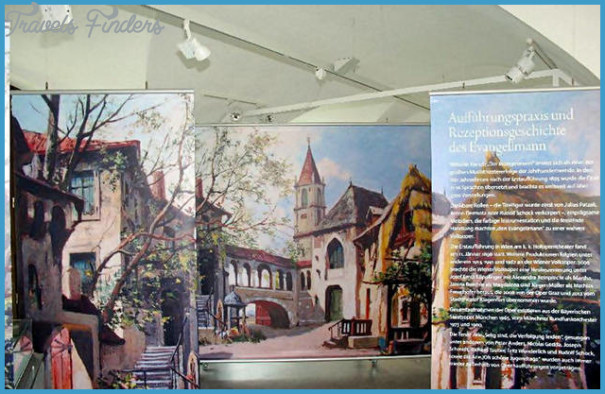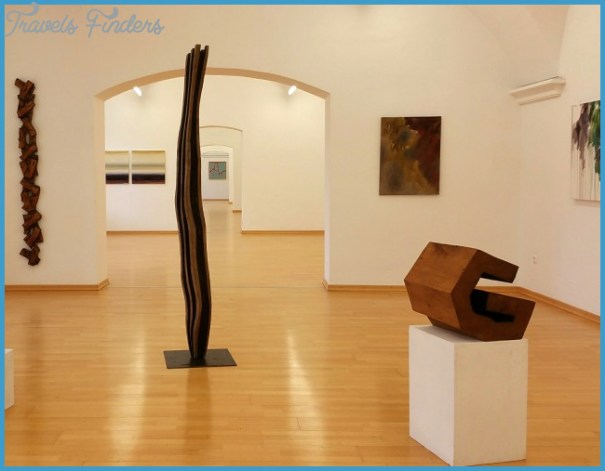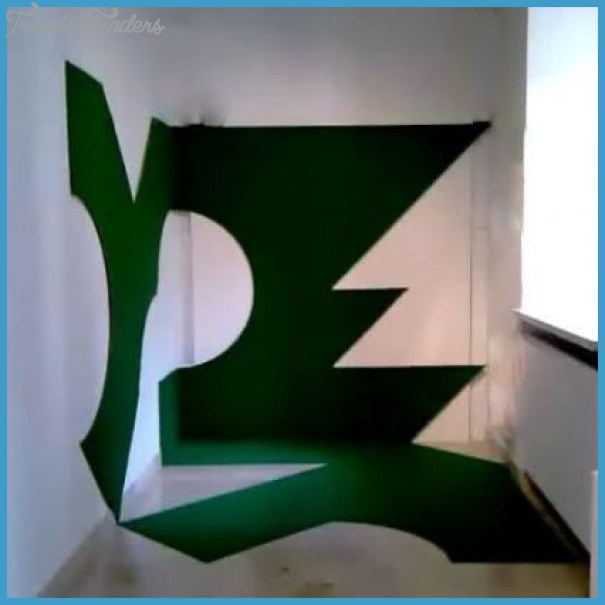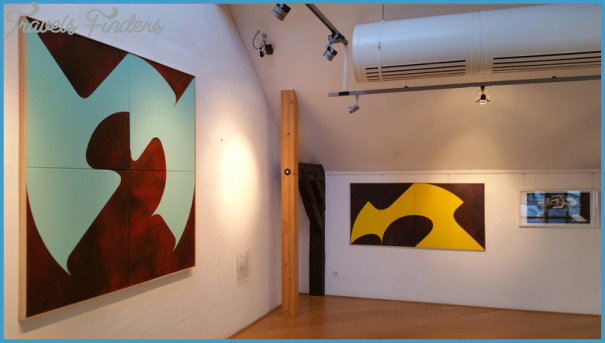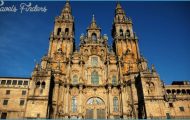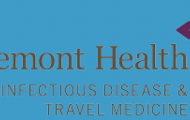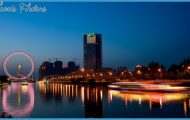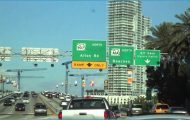KIENZL MUSEUM
The Austrian opera composer Wilhelm Kienzl was born on 17 January 1857 in a first-floor room of a 16th-century inn in the small market town of Waizenkirchen, about 40 km west of Linz. His family moved to Gmunden and then Graz when he was a child, but the connections with Waizenkirchen remained. As early as 1903 a plaque was put up on the inn to record his birth there. When the Mayrhuber family took over the inn, in 1914, they established friendly relations with the composer, who returned to his native town in 1927 for celebrations to mark his 70th birthday. The innkeeper’s daughter, who was present, later installed displays in the room the Kienzl family had occupied and she presides over it to this day.
Kienzl studied in Prague, Leipzig, Weimar and Vienna and travelled widely, lecturing and giving recitals. A passionate Wagnerian, he went to the first performance of The Ring and religiously made the annual Bayreuth pilgrimage. In 1879 he quarrelled with Wagner, but he dropped everything on the news of Wagner’s death in Venice in February 1883 and hurried there to accompany the coffin back to Bayreuth. He himself composed ten operas, most famously Der Evangelimann (1894), as well as the national anthem of the First Austrian Republic, to a text by Rights were not granted to include these illustrations in electronic media. Please refer to print publication The inn at Waizenkirchen where Kienzl was born the first president, Dr Karl Renner. He married twice – first a Bayreuth singer, Lili Hoke, who died in 1919, and two years later Henny Bauer, who provided the texts for his last three operas and with whom he lived in Vienna, at Schreygasse 6 in the second district (marked by a plaque, erected on his centenary in 1957) until his death there on 19 October 1941.
KIENZL MUSEUM Photo Gallery
From 1893 he spent his summers at the beautiful resort of Bad Aussee, where on a high verdant plateau he kept a little Stockl’ close to a coffee house and inn (‘zur Wasnerin’), which in 1934 gave way to a resort hotel and golf course. Kienzl stopped coming to Bad Aussee in the 1930s, but the little two-storey house survives, largely because it was there that he composed Der Evangelimann – even if it is now excessively close to the Hotel-Restaurant Wasnerin and rather unhappily extended at the front. It isn’t open to the public but it is worth pausing to read the inscription and the quotation from a melody from the opera (sadly the rhythm is muddled) painted on the front of the house, to admire the spectacular view and to breathe the mountain air. There are other buildings in the area associated with Kienzl, among them the Haus Amon-Fiedler, at the intersection of Teichstrafie and Wilhelm-Kienzl-Strafie.
Kienzl was buried with honours (a choir sang Meine Lust ist Leben’ at his graveside) in the Zentralfriedhof. He had no heirs, so his manuscripts passed to the Osterreichisches Nationalbibliothek; other items of value were sold. But the Mayrhubers were able to salvage a number of interesting items to display in the hotel room, including some of his childhood drawings, music manuscripts of several songs, a handwritten catalogue of his music, an account book and his guestbook from their Vienna days, which gives evidence of the rich musical-literary community around the Kienzls; many photographs (portraits and images of his homes in Vienna and Bad Aussee), a cast of his right hand and a death mask, his cane, his awards, banners from special performances and a bronze laurel wreath.
Many items, of course, are associated with Der Evangelimann, including a poster and the watercolour designs for the costumes for the Viennese production, and his collaboration with Dr Renner and the Austrian folk poet Peter Rosegger. It is hard to think of a quirkier position for a composer museum than at the historic site of the action of one of his operas. In 2002 the Austrian village of Paudorf (just south of Krems, about 75 km west of Vienna) decided to capitalize on its flicker of fame as the setting for Der Evangelimann, the climax of which is a fire, the result of arson, at the Hellerhof, a Benedictine monastery in the village (which is close to Gottweig, visible on the skyline). The municipality set up a Kienzl museum at the Hellerhof, in a long room – as if a former cloister, now enclosed -between the church and the main monastic building. There is an attractively laid out display in showcases along the perimeter, with space down the middle for separate, temporary exhibitions of paintings.
Emphasis, naturally, falls on Der Evangelimann (you can compare some of the pictures of stage settings with the reality through the windows); there are scores, librettos, posters, reviews and a plan of the Hellerhof. But there is material too, most of it loaned from Viennese collections, on his other, lesser-known operas and on his national anthem, as well as busts and portraits of the man himself, and on his two wives, including items from Lili Hoke’s repertory (Wagner, Brahms and naturally Kienzl).

